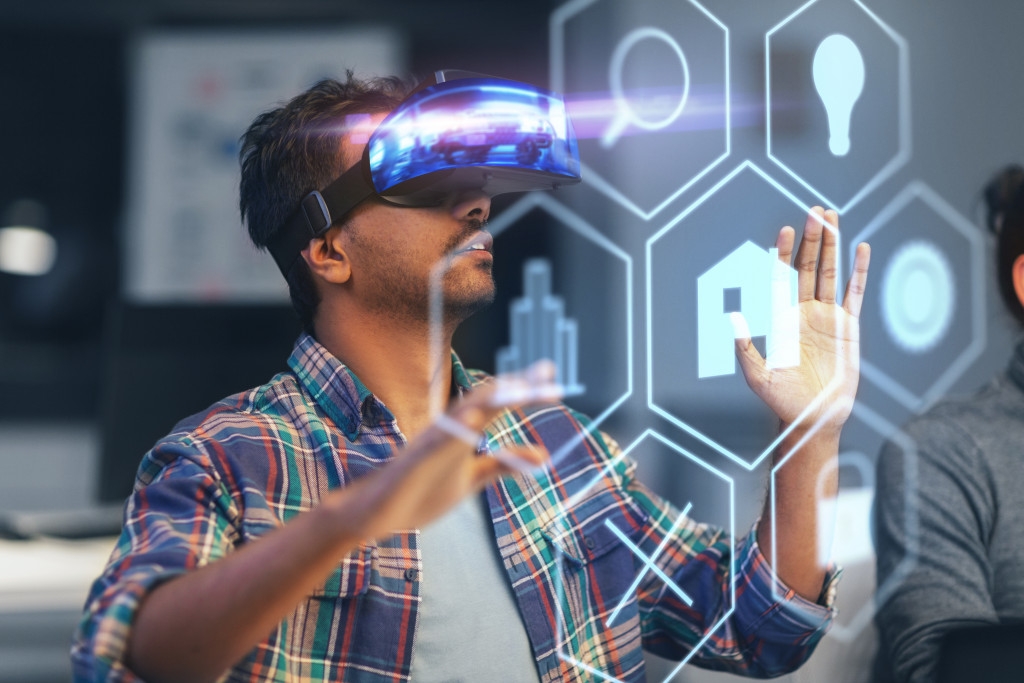Construction is an inherently dangerous profession. OSHA estimates more than 4,000 worker fatalities in 2020 and thousands more in construction-related injuries yearly. Thankfully, several technologies are making construction much safer. Here are five of the most important ones.
Online Testing
This might be a simple digital technology for many, but it can make a difference in construction. Many countries in the world have implemented online testing for their construction workers. For example, in the United Kingdom, construction workers can now apply for an online CSCS green card course. This course covers health and safety in construction. The card is then used to prove that the worker has completed the course and can work safely on a construction site.
This technology is essential because it allows construction workers to get certified without taking time off. It also means more workers are certified, leading to a safer construction site.

Drones
Drones are used for various tasks in the construction industry, including mapping and surveying land, inspecting equipment and structures, and delivering supplies to hard-to-reach places. Here are four ways drones are making construction projects a lot safer:
Potential Hazard Inspection
Construction projects have many potential hazards, from open trenches to high scaffolding. Construction managers can use drones to inspect these hazards quickly and safely.
Accident prevention
Construction managers can also use drones to survey construction sites for accidents. For example, if a worker is about to use a power tool unsafely, the drone can spot it and stop the worker before getting hurt.
Monitoring traffic
Construction sites are often located near busy roads. Drones can monitor traffic around the site and direct workers away from potential danger.
Delivering supplies
In many construction projects, workers must climb high scaffolds or work in other difficult-to-reach places. Drones can deliver supplies like tools and materials to these workers without putting anyone in danger.
Virtual Reality
Virtual Reality is being used to train construction workers in a safe environment. VR can simulate dangerous situations so that workers know how to react if they find themselves in a similar situation on the job site. VR can also be used for design purposes, allowing architects and engineers to catch potential problems before construction begins.
Virtual Reality comes with several advantages in construction safety. First, it can be used to train workers without putting them in any danger. Second, it can help catch potential hazards before construction even begins.
Wearables
Wearable technologies like smartwatches and fitness trackers are used in construction to improve safety. These devices can track a worker’s location, heart rate, and other essential health data. This information can prevent accidents and injuries on the job site.
For example, the wearable device will alert their supervisor if a worker is operating heavy machinery and their heart rate spikes. The supervisor can then take action to prevent an accident from happening.
3D Printing
3D printing creates prototypes of buildings and other structures before they’re built. It helps engineers identify potential problems to be fixed before construction begins. Additionally, 3D printing creates customized parts and components on-site, saving time and money. Here are four ways 3D printing is making construction projects safer:
Modular Construction
This form of construction requires less manpower on the field. This is because the construction is done in a factory setting which is much more controlled.
Eliminating waste
Since 3D printing can create customized parts, there’s no need for extra material that will go to waste. As a result, it means fewer hazardous materials in projects.
Reducing on-site accidents
3D-printed parts are often lighter and easier to handle than traditional materials. As a result, it reduces the risk of on-site accidents.
Improved air quality
3D printers don’t release harmful fumes like other construction tools and machines.
BIM Software
Architects, engineers, and contractors use BIM (Building Information Modeling) software to plan, design, and construct buildings more efficiently than ever before. BIM software provides a comprehensive view of a project so that everyone involved understands what needs to be done. In addition, it helps reduce errors and miscommunication, which can lead to accidents on construction sites.
Additionally, BIM is known for its ability to identify potential problems before construction even begins. By catching these problems early, BIM can help prevent accidents and injuries on the job site.
These are just a few examples of technologies making construction much safer. As these technologies become more prevalent on job sites, people expect accidents and injuries to continue declining. If you’re involved in the construction industry, it’s essential to stay up-to-date on the latest safety innovations so that you can help make your job site as safe as possible.
